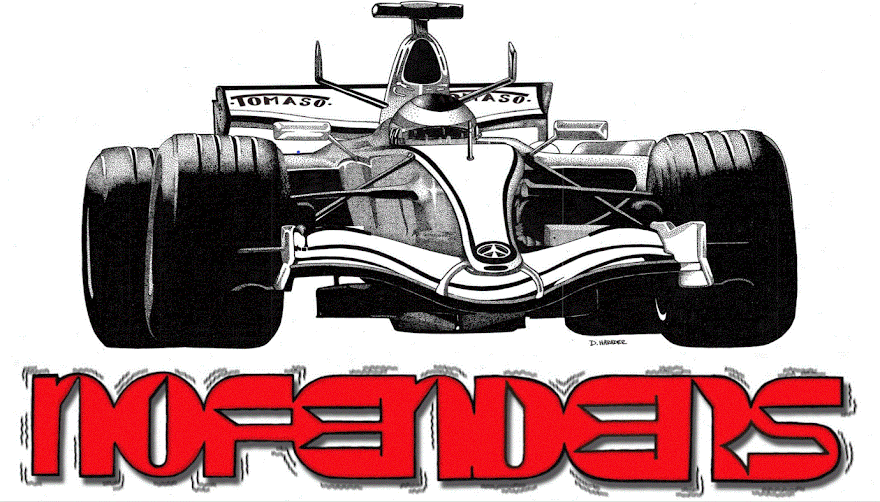Have you ever wondered why no Japanese
drivers have truly succeeded in Formula 1? And while Japan still awaits a
maiden Grand Prix victory from one of its driver’s, Honda has thus far carried
the torch while the verdict is still out over its rival Toyota…
Although this season’s results have been
horrific for Honda and its “Planet Earth” theme, nevertheless Honda’s storied
history in Formula 1 now spans over four decades. With Japan’s first success
coming during Honda’s original foray into F1 in the early 1960’s.
The burgeoning team began life with a
relative unknown American driver by the name of Ronnie Bucknum after Honda was
unable to acquire the services of Phil Hill.
Bucknum debuted the Honda RA271 1.5 liter
V-12 in the German Grand Prix at the Nurburgring in 1963, with Honda’s single
car effort wallowing about the rear of the grid during 1964 before Honda
decided to add a second American pilot to its line-up in 1965.
This driver was fellow Californian Richie
Ginther who was known as a very good development driver, which Honda was
looking for. Ginther scored Honda’s very first Formula 1 World Championship
point with a sixth place finish at Spa. Then in the very last race of the 1.5
liter engine era held in Mexico City, Ginther scored Honda’s maiden F1 victory
with Bucknum finishing fifth.
From 1966-68, Honda struggled to come to
grips with the new 3.0 liter engine formula as both Bucknum and Ginther left
the team at the end of 1966. They were replaced by 1964 World Champion John
Surtees for the ‘67 season. Surtees would give Honda it’s second F1 victory at
Monza, Italy in the RA 300’s racing debut before falling out of favour withSoichiro Honda
over the portly RA 302 not being ready to race.
Thus in the summer of 1968 the unwieldy RA
302 magnesium chassis, air cooled V-12 race car was given to Frenchman Jo Schlesser to
race in the French GP instead. Unfortunately Schlesser
lost control of the vehicle, rolled and burst into flames before loosing his
life, thus effectively ending Honda’s first foray into Formula 1 at the end of
the 1968 season.
Interestingly when the movie Grand Prix was
made in 1966, I suspect it was viewed as preposterous that a Japanese entry
would ever win the World Championship. But in 1983 Honda began development of a
new style racing engine, a 1.5 liter twin turbocharged V-6 running in the back
of the minnow-esc Spirit Racing team before jumping to Williams for the 1984
season.
Honda’s World Championship winning ways began
in 1987 with their mighty engine propelling Williams Nelson Piquet to his third
and final driver’s crown. This began a streak of five consecutive championships
with Williams and McLaren, as the two rival British teams wrestled for Honda
“Works” status during this time period.
Three Japanese drivers participated in the
inaugural Japanese Grand Prix at Mount Fuji (1976-77) with a fourth joining the
following year before switching venues to Suzuka owned by Honda in 1987. The
fabulous Suzuka circuito was originally built as a test track in 1962 near by
Honda’s immense factory.
Suzuka saw many fierce battles between
championship rivals Ayrton Senna and Alain Prost. It was also here where Senna
had his famous punch-up with rookie Eddie “Irv the Swerve” Irvine.
Although Suzuka hosted the Japanese Grand
Prix from 1987-2006, ironically this year’s event will revert back to Mount
Fuji which has been owned by Toyota since 2000 and heavily updated.
Yet with Honda’s return to Grand Prix racing
in the early 1980’s, the resurgence of this Rising Sun manufacturer as a championship
winning engine supplier allowed Honda to flex its powerful influence upon
Formula 1. Thus triggering a new influx of Japanese drivers with Satoru
Nakajima spearheading the charge.
Nakajima’s close ties with Honda helped him
land the second Lotus seat alongside Ayrton Senna in 1987, after testing a
Williams “mule” chassis with Honda power prior to becoming the very first full
time Japanese driver in F1. He also became the first Japanese driver to score
World Championship points in only his second race outing…
(This page was Updated on: February 20, 2016)
